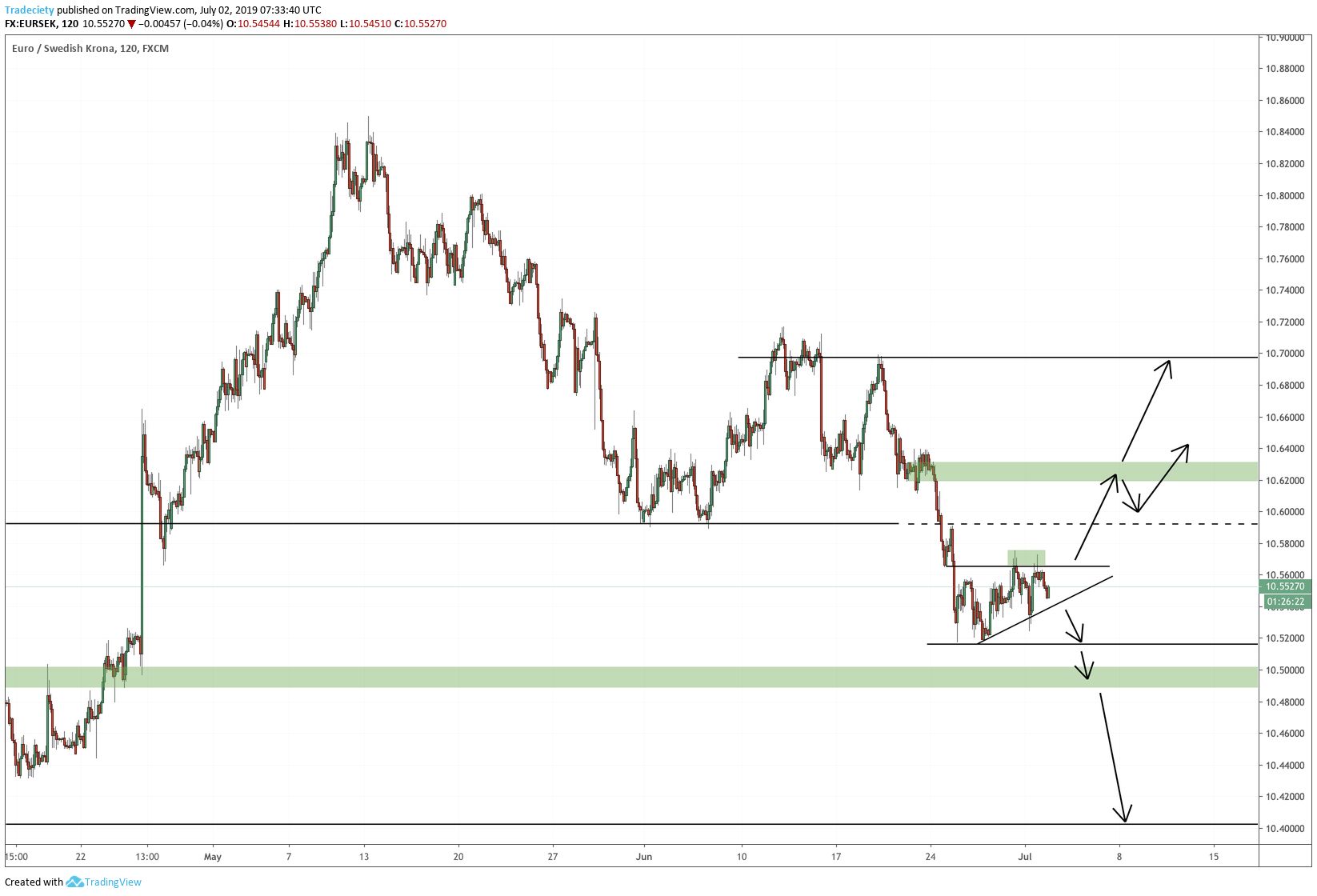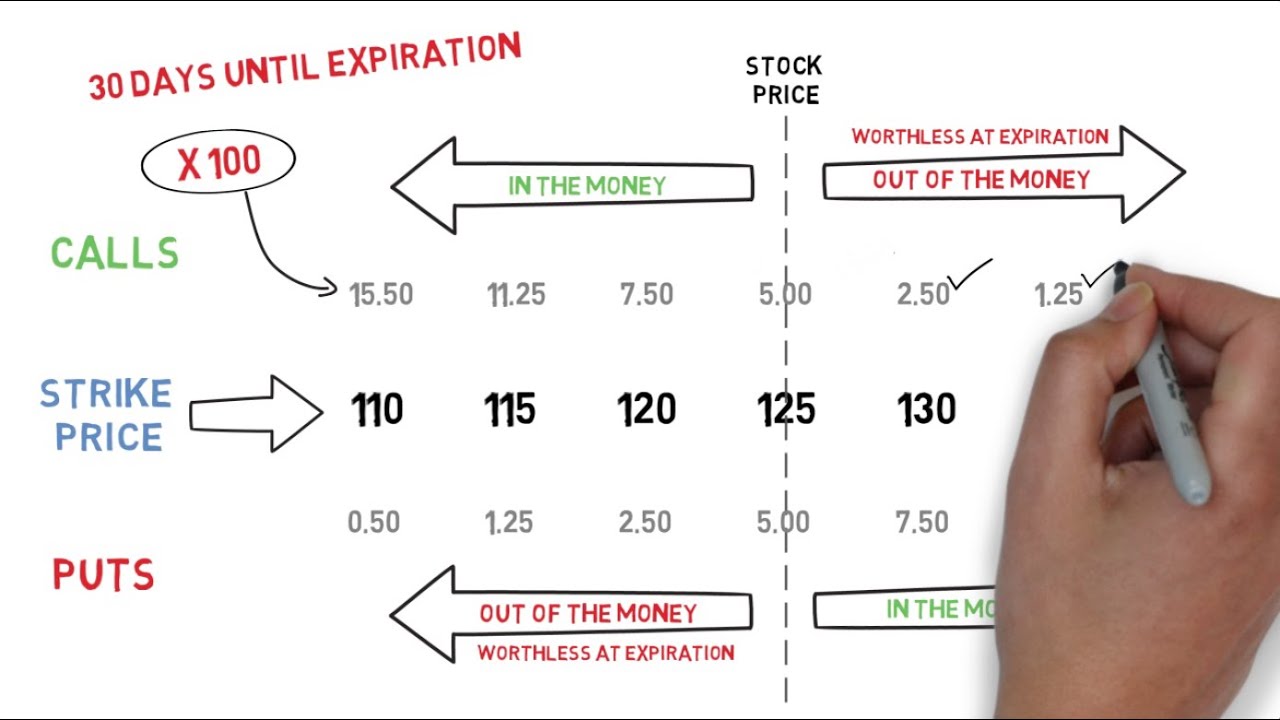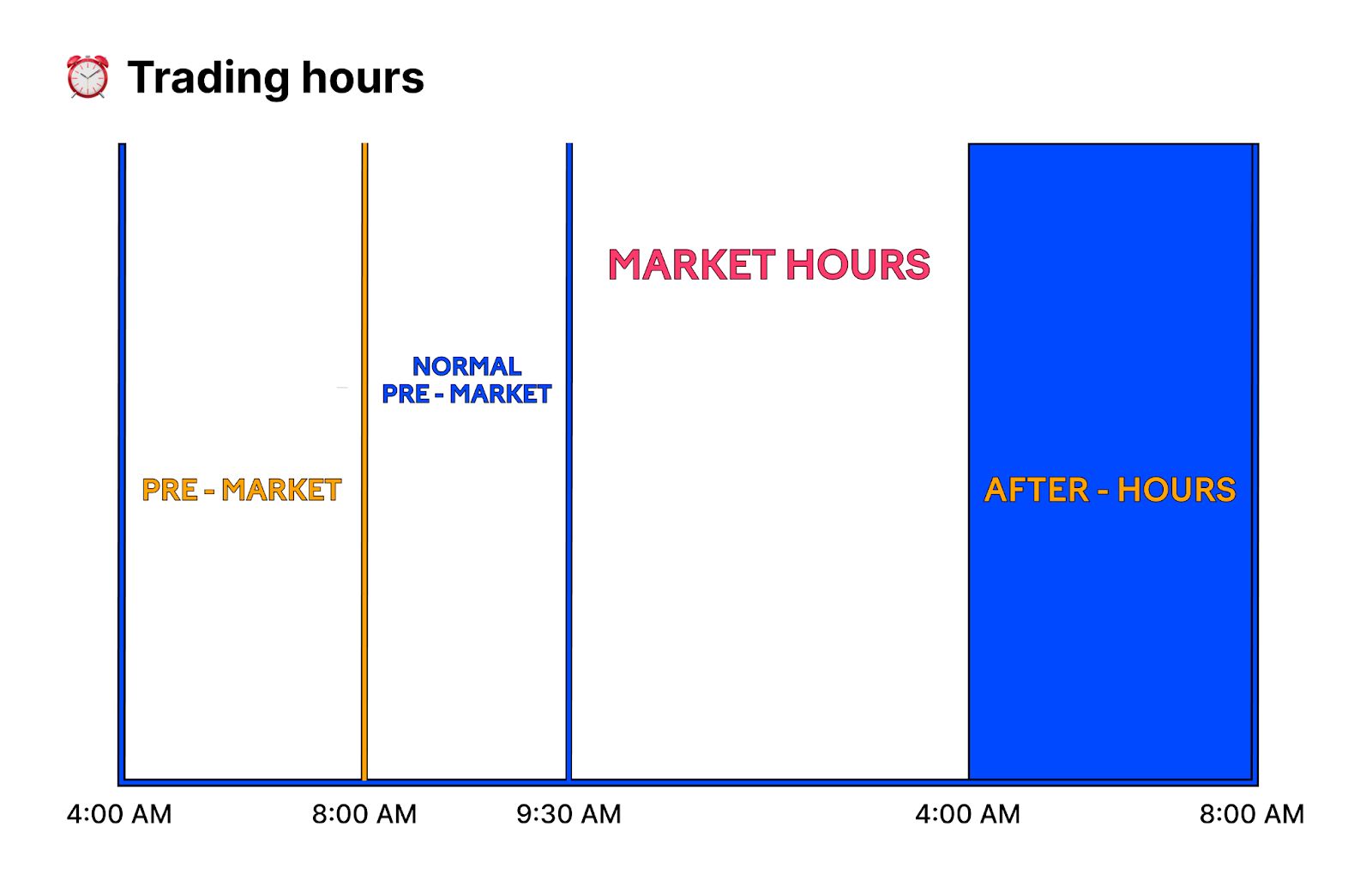Introduction
Welcome to the world of trading! Whether you’re a seasoned investor or just starting out, having a well-structured trading plan is essential for success in the financial markets. A trading plan serves as a roadmap that guides your decision-making process and helps you stay disciplined in the face of market volatility.
Trading can be a highly lucrative endeavor, but it also carries significant risks. Without a proper plan in place, you may find yourself making impulsive and emotional decisions, leading to costly mistakes. By creating a solid trading plan, you can eliminate guesswork and increase your chances of achieving consistent profits.
In this article, we will explore the key components of a comprehensive trading plan and provide you with a step-by-step guide to help you create your own blueprint for success. From setting clear trading goals to implementing risk management strategies, we will cover everything you need to know to develop a robust and effective trading plan.
It’s important to note that a trading plan is not a guaranteed formula for success, nor is it a one-size-fits-all solution. Different traders have different objectives, risk tolerances, and trading styles. Therefore, it’s crucial to customize your plan according to your specific needs and preferences.
Throughout this article, we will emphasize the importance of self-reflection, adaptability, and continuous learning. A trading plan is not a static document, but rather a dynamic tool that evolves as market conditions change and as you gain more experience and knowledge. Regularly reviewing and adjusting your trading plan will ensure its relevance and effectiveness in helping you navigate the ever-changing financial landscape.
So, whether you are a day trader, swing trader, or long-term investor, buckle up and get ready to embark on the journey of creating your own trading plan. With the right mindset, proper preparation, and a well-structured plan, you’ll be well-positioned to achieve your financial goals and conquer the exciting world of trading.
Step 1: Set Clear Trading Goals
Before diving into the world of trading, it’s crucial to establish clear and specific goals for yourself. Setting goals will provide you with a sense of direction and purpose, allowing you to stay focused and motivated throughout your trading journey. Your trading goals should be realistic, achievable, and aligned with your personal financial objectives.
Start by identifying your long-term goals. Are you looking to generate a supplemental income, save for retirement, or fund a major purchase? Understanding your overarching objectives will help guide your trading decisions and keep you on track.
Once you have determined your long-term goals, break them down into smaller, manageable objectives. These short-term goals will serve as checkpoints along the way, allowing you to measure your progress and make any necessary adjustments to your trading plan.
When setting your trading goals, it’s essential to consider your risk tolerance. Different trading strategies carry varying degrees of risk, and it’s important to align your goals with how much risk you are willing to take. If you have a low tolerance for risk, you may prioritize capital preservation and aim for consistent but smaller profits. On the other hand, if you are comfortable with higher risk, you may be more aggressive in your trading approach, seeking larger gains but also accepting the possibility of larger losses.
Additionally, it’s important to set a timeframe for achieving your trading goals. Are you looking to achieve your objectives in a matter of months, years, or even decades? Having a specific timeframe in mind will help you determine the appropriate trading strategies and timeframes to focus on.
Remember, trading is not just about making profits; it’s also about managing risk. Consider setting risk management goals alongside your profit-related goals. For example, you may decide to limit your maximum loss on any single trade or implement a trailing stop-loss order to protect your profits.
As you set your trading goals, be sure to write them down and keep them visible. This will serve as a constant reminder of what you are working towards and help you stay committed to your trading plan. Regularly review and revise your goals as your financial situation and market conditions evolve.
By setting clear and realistic trading goals, you’ll be better equipped to stay focused, motivated, and disciplined throughout your trading journey. Your goals will guide your decision-making process and help you avoid succumbing to emotional and impulsive trading behaviors. Remember, successful trading is a marathon, not a sprint. Stay patient, stay determined, and let your goals be your guiding light.
Step 2: Assess Your Risk Tolerance
Understanding your risk tolerance is a critical step in creating a successful trading plan. Your risk tolerance is the level of uncertainty or potential loss that you are comfortable with when engaging in trading activities. Assessing your risk tolerance will help you determine the appropriate trading strategies and risk management techniques to employ.
Begin by evaluating your financial situation and your ability to withstand potential losses. Consider factors such as your current income, savings, and expenses. It’s important to have a clear understanding of how much capital you are willing to allocate to trading and the impact it may have on your overall financial well-being.
Next, examine your emotional response to risk. How do you typically react during times of market volatility or when faced with potential losses? Some traders thrive on the adrenaline rush and embrace high-risk opportunities, while others prefer a more conservative approach. Being honest with yourself about your emotional responses will help you align your trading decisions with your risk tolerance.
It’s essential to recognize that risk tolerance can vary over time and under different market conditions. During a bull market, you may feel more inclined to take on higher levels of risk, while in a bear market, you may prefer a more defensive approach. Regularly reassess your risk tolerance to ensure it remains aligned with your comfort level and financial objectives.
Once you have a clear understanding of your risk tolerance, you can tailor your trading strategies accordingly. Conservative traders may prioritize capital preservation and opt for lower-risk investments, such as long-term positions or diversified portfolios. On the other hand, aggressive traders may be more comfortable with short-term, high-risk trades that offer the potential for quick profits.
Regardless of your risk tolerance, it’s crucial to implement sound risk management techniques. These techniques include setting appropriate stop-loss levels, diversifying your portfolio, and not overexposing yourself to a single trade or asset class. By managing risk effectively, you can protect your capital and ensure longevity in the markets.
Remember, risk is an inherent part of trading, and there is no such thing as a risk-free strategy. It’s important to find the right balance between taking calculated risks and protecting your capital. By assessing your risk tolerance and implementing proper risk management techniques, you’ll be well-prepared to navigate the ups and downs of the market with confidence.
Step 3: Define Your Trading Strategy
A trading strategy is a set of rules and guidelines that outline your approach to the market. Defining a clear and well-defined trading strategy is vital for consistent success in trading. It helps you make objective decisions based on predetermined criteria, rather than relying on emotions or impulsive reactions.
When designing your trading strategy, consider the time and effort you can dedicate to trading. Are you a full-time trader or do you have other commitments? This will determine whether you should focus on short-term strategies, such as day trading or scalping, or long-term strategies, such as swing trading or position trading.
Next, determine the markets or assets you want to trade. Are you interested in stocks, forex, commodities, or cryptocurrencies? Each market has its own characteristics and requires specialized knowledge. Selecting a market that aligns with your interests and expertise will increase your chances of success.
Once you have chosen the market, you need to decide on the specific indicators, tools, or methodologies you will use to analyze the market and make trading decisions. This could include technical indicators, such as moving averages or RSI, or fundamental analysis based on news and economic data. Experiment with different strategies and indicators to find what works best for you and aligns with your trading goals.
Another important consideration is the timeframe you will trade on. Will you be a day trader focusing on short-term price movements, or a swing trader looking for multi-day or multi-week trends? The timeframe you choose will determine the frequency of your trades and the level of monitoring required.
It’s also crucial to define your entry and exit criteria. This includes identifying the specific conditions or signals that will prompt you to enter a trade, as well as the criteria for exiting a trade with a profit or minimizing losses. Having clear entry and exit rules in place will help you stay disciplined and avoid making impulsive decisions based on short-term price fluctuations.
As you develop your trading strategy, it’s important to backtest and refine it. Backtesting involves analyzing historical data to see how your strategy would have performed in different market conditions. This will help you identify any weaknesses or areas for improvement and allow you to make necessary adjustments before trading with real money.
Remember, a trading strategy is not set in stone and should be adaptable. Markets are dynamic and constantly changing, so it’s important to continuously monitor and evaluate the effectiveness of your strategy. Stay open to learning, adjust your approach when needed, and be willing to evolve along with the market.
By defining a clear trading strategy that aligns with your goals and preferences, you’ll build a solid foundation for successful trading. Your strategy will provide structure and guidelines, allowing you to make informed decisions and stay on track towards achieving your trading objectives.
Step 4: Determine Your Trading Style
Your trading style refers to the approach and timeframe in which you execute your trades. Determining your trading style is crucial as it directly impacts your decision-making process and the strategies you employ. By understanding your trading style, you can align your trading activities with your strengths and preferences, ultimately increasing your chances of success.
One of the primary aspects to consider is the frequency of your trades. Are you more inclined towards active trading or do you prefer a more passive approach? Active traders, such as day traders or scalpers, engage in frequent trades throughout the day, capitalizing on short-term price movements. On the other hand, passive traders, like swing traders or position traders, participate in fewer trades, holding positions for longer periods to capture larger market moves.
Next, consider the level of monitoring and time commitment you can dedicate to trading. Day traders need to closely monitor the market and make quick decisions, while swing traders can afford to spend less time actively watching the markets. Assess your availability and lifestyle to choose a trading style that suits your needs.
Your risk tolerance also plays a role in determining your trading style. Aggressive traders with a higher risk tolerance may be drawn to shorter timeframes and a more active trading style. Conversely, conservative traders who prefer lower risk levels may lean towards longer-term strategies, focusing on macroeconomic trends and broader market movements.
Another aspect to consider is your personality and trading temperament. Are you comfortable with the fast-paced, high-pressure environment that comes with active trading, or do you prefer a more patient and relaxed trading style? Matching your trading style to your personality will help you maintain a consistent approach and avoid making decisions that are not aligned with your natural tendencies.
While it’s important to choose a trading style that aligns with your preferences, it’s also essential to continually evaluate and adapt your approach as needed. As you gain experience and observe market conditions, you may discover that your initial trading style needs adjustments. Stay open to learning and be willing to explore new strategies that can enhance your performance.
Remember, there is no right or wrong trading style. The key is to find a style that suits your personality, risk tolerance, and goals. Once you have determined your trading style, focus on developing and refining strategies that are tailored to your chosen approach.
By determining your trading style, you’ll be able to create a trading plan that maximizes your strengths and minimizes your weaknesses. Your trading style will provide clarity and direction, helping you navigate the markets with confidence and increasing your chances of achieving consistent profits.
Step 5: Choose Your Trading Tools and Indicators
Selecting the right trading tools and indicators is essential for effective decision-making and maximizing your trading performance. These tools provide valuable insights into market trends and help you identify potential trading opportunities. When choosing your trading tools and indicators, it’s important to consider their relevance to your trading strategy and the reliability of the signals they generate.
Start by identifying the key elements of your trading strategy. Are you relying on technical analysis or fundamental analysis? Technical traders often use indicators and chart patterns to analyze price and volume data, while fundamental traders focus on economic indicators, news events, and company financials. Determine which approach resonates with your trading style and priorities.
For technical analysis, there are numerous indicators available, each serving a different purpose. Moving averages, for instance, help identify trends and potential entry or exit points. Oscillators like the Relative Strength Index (RSI) provide overbought or oversold signals. It’s important to understand the characteristics of the indicators and how they align with your trading strategy.
Consider the timeframe you trade on and choose tools and indicators that are appropriate for that timeframe. Some indicators perform better in short-term trading, while others are more suited for longer-term analysis. Experiment with different tools and indicators to find the ones that best complement your trading style and provide reliable signals.
Furthermore, take into account the level of complexity and ease of use of the trading tools and indicators. Are you comfortable with complex mathematical calculations and advanced trading platforms, or do you prefer user-friendly tools that provide clear visual signals? The usability of the tools is crucial for timely decision-making and reducing the chances of errors.
While selecting your trading tools and indicators, be cautious of overloading your charts with too many indicators. Too much information can lead to analysis paralysis and confusion. Instead, focus on a few key indicators that are proven to work well together and provide consistent signals.
Keep in mind that trading tools and indicators are not infallible. It’s essential to combine them with other forms of analysis and exercise your judgment. Consider factors such as market sentiment, news events, and overall market conditions to validate the signals generated by your chosen tools and indicators.
As you gain experience and knowledge, regularly review and reassess your trading tools and indicators. Market dynamics change, and what worked in the past may not work as effectively in the future. Stay up to date with industry trends and advancements to ensure that your tools and indicators remain relevant and accurate.
By carefully selecting your trading tools and indicators, you’ll enhance your ability to make informed decisions and identify profitable trading opportunities. These tools serve as valuable resources to support your trading strategy and increase your chances of success in the financial markets.
Step 6: Identify Market Conditions and Trends
Understanding market conditions and identifying trends is crucial for successful trading. Market conditions refer to the overall state of the financial markets, including factors such as volatility, liquidity, and sentiment. By analyzing market conditions, you can make more informed trading decisions and increase your chances of profitability.
Begin by familiarizing yourself with different types of market conditions. These can include trending markets, range-bound markets, and volatile markets. Trending markets are characterized by a consistent and directional movement in prices, while range-bound markets move within a specific price range. Volatile markets experience significant price fluctuations, often driven by news events or economic data releases.
Next, pay attention to key market indicators and economic data. Factors such as interest rates, employment figures, and inflation can significantly impact the overall market conditions. Stay updated on relevant news and economic announcements to gauge the potential impact on the markets and adjust your trading strategies accordingly.
To identify trends, utilize technical analysis tools such as chart patterns, moving averages, and trendlines. Chart patterns, such as head and shoulders or ascending triangles, can provide insights into potential trend reversals or continuations. Moving averages help smooth out price data and identify the direction of the trend, while trendlines connect the higher lows or lower highs to visualize the trend.
Additionally, analyze the volume and momentum indicators to confirm trend strength. Volume refers to the number of shares or contracts traded in a given period, indicating the participation and interest of market participants. Momentum indicators, such as the Moving Average Convergence Divergence (MACD) or the Relative Strength Index (RSI), provide insights into the speed and strength of price movements, indicating whether a trend is likely to continue or reverse.
Consider using multiple timeframes to confirm the presence of a trend across different intervals. The trend may appear different on a daily chart compared to a weekly chart. Confirming the presence of a trend across multiple timeframes reduces the likelihood of false signals and increases the probability of profitable trades.
Remember, market conditions and trends can change rapidly, driven by various external factors. It’s important to continuously monitor and adapt your trading strategies to align with the current market environment. Regularly review your analysis techniques and stay updated with market news to proactively adjust your trading approach.
By identifying market conditions and trends, you’ll have a clearer picture of the overall market sentiment and be better equipped to make well-informed trading decisions. Understanding market dynamics and recognizing trends will significantly enhance your ability to capitalize on profitable trading opportunities.
Step 7: Develop Entry and Exit Criteria
Developing clear and defined entry and exit criteria is crucial for executing successful trades. Entry criteria determine when to enter a trade, while exit criteria dictate when to exit a trade with a profit or cut losses. Having well-defined entry and exit criteria helps remove emotions from your trading decisions and keeps you disciplined and objective.
Start by identifying the criteria that signal a trade entry. This could include specific price levels, technical indicators, or chart patterns. For example, you may decide to enter a trade when the price breaks above a certain resistance level or when a moving average crossover occurs. Whatever criteria you choose, ensure they align with your trading strategy and have a proven track record of success.
Consider using multiple confirming signals for trade entry. This helps reduce the probability of false signals and increases the likelihood of entering trades with stronger potential. Using a combination of technical indicators or waiting for patterns to align can provide a more robust entry signal.
Once you’re in a trade, it’s important to establish clear exit criteria to manage risk and maximize profits. Define your profit targets based on your trading strategy and the risk-reward ratio you are comfortable with. Consider using trailing stops or dynamic profit targets that adjust as the trade progresses, allowing you to capture more profits if the market moves in your favor.
Equally important is establishing stop-loss levels to limit potential losses. Determine the maximum amount of capital you are willing to risk on a trade and set your stop-loss order accordingly. This ensures you exit the trade if it goes against you, protecting your capital from significant losses.
Consider using a combination of technical indicators and price action to determine exit points. Look for signs of trend weakness, such as a break of key support levels or bearish candlestick patterns, as signals to exit a trade. Also, consider implementing trailing stops to lock in profits as the market moves in your favor.
Regularly review and analyze your trading performance to refine your entry and exit criteria. Keep a record of your trades and evaluate which criteria are yielding the best results. Be open to adjusting and optimizing your criteria based on market conditions and the performance of your trading strategy.
While it’s important to have clear entry and exit criteria, remain flexible and adaptable. Market conditions change, and it’s important to be able to adjust your criteria accordingly. Regularly reassess your trades and adapt your criteria as needed to stay in alignment with the ever-evolving market dynamics.
By developing clear and well-defined entry and exit criteria, you’ll be better equipped to execute your trades with confidence. These criteria will help you stay disciplined and objective, guiding your decision-making process and increasing your chances of success in the markets.
Step 8: Set Realistic Profit Targets and Stop-Loss Levels
Setting realistic profit targets and stop-loss levels is crucial for managing risk and optimizing your trading outcomes. Profit targets define the desired level of profit you aim to achieve, while stop-loss levels determine the maximum acceptable loss you are willing to tolerate. Striking the right balance between profit targets and stop-loss levels is essential for successful trading.
When setting profit targets, consider the risk-reward ratio of each trade. This ratio assesses the potential profit relative to the potential loss. Aim for a risk-reward ratio that provides a suitable balance between profit potential and risk exposure. For example, if your stop-loss level is 2% of your capital, target a profit that offers at least a 2:1 reward-to-risk ratio.
It’s important to set realistic profit targets based on historical market behavior and the timeframes you are trading on. Consider the average price range of the asset you are trading and set profit targets that fall within a reasonable range of that average. Avoid setting overly ambitious profit targets that may lead to excessive risk-taking or disappointment if not achieved.
Equally important is setting stop-loss levels to protect against potential losses. Determine the maximum amount of capital you are willing to risk on a trade and set your stop-loss order accordingly. Base your stop-loss level on key support or resistance levels, technical indicators, or the maximum acceptable loss based on your risk tolerance.
Consider using trailing stops to lock in profits as the trade moves in your favor. A trailing stop adjusts automatically as the price moves, allowing you to capture additional gains while protecting your profits. This dynamic approach to stop-loss levels helps maximize potential profits while still managing risk.
Regularly review and adjust your profit targets and stop-loss levels as needed. Market conditions change, and what may have been appropriate yesterday may no longer be valid today. Stay updated with market developments and reassess your risk levels to ensure your profit targets and stop-loss levels remain relevant and effective.
While it’s important to set profit targets and stop-loss levels, remember to remain flexible and adaptable. Sometimes market conditions may warrant adjustments to your predetermined levels. Occasionally, unexpected price movements or news events may necessitate revisions to your initial plan. Stay nimble and be willing to adjust your targets and levels to ensure they align with the current market environment.
By setting realistic profit targets and stop-loss levels, you’ll be able to manage risk effectively and optimize your trading outcomes. Well-defined targets and levels help you stay disciplined and avoid emotionally-driven decision-making, increasing your chances of long-term success in the markets.
Step 9: Implement Proper Risk Management Techniques
Implementing proper risk management techniques is crucial for preserving capital and protecting yourself against potential losses. Managing risk effectively is a key component of a successful trading plan and helps ensure longevity in the markets. By following sound risk management principles, you can mitigate the impact of adverse market movements and increase your chances of achieving consistent profitability.
One of the fundamental risk management techniques is determining the appropriate position size for each trade. This involves calculating the amount of capital you are willing to risk on a trade based on your risk tolerance and the size of your trading account. By limiting your position size to a manageable percentage of your account balance, you can control your exposure to potential losses and protect your capital.
Setting stop-loss orders is another critical risk management technique. A stop-loss order automatically closes a trade at a predetermined price level, limiting the amount of loss you can potentially incur. By placing a stop-loss order for every trade, you establish a maximum acceptable loss and ensure that losses are cut short before they escalate.
Consider implementing trailing stops to protect profits and mitigate risk as a trade moves in your favor. A trailing stop adjusts automatically as the price moves, allowing you to lock in profits while still giving the trade room to breathe. This technique helps protect against potential reversals and allows you to exit a trade with a profit if the market turns against you.
Diversification is an essential risk management strategy. By spreading your capital across different asset classes, sectors, or geographical regions, you reduce the impact of a single trade or market event on your overall portfolio. Diversification helps protect against concentrated risks and potential losses from a single investment.
Regularly monitoring and reviewing your trading performance is also a key aspect of risk management. Keep track of your trades, including both winners and losers, and analyze the statistics to identify patterns and areas for improvement. By reviewing and learning from your past trades, you can refine your strategies and enhance your risk management techniques.
Another aspect of risk management is maintaining emotional control. Emotions can cloud judgment and lead to impulsive or irrational decision-making. Develop strategies, such as taking breaks from trading or using meditation techniques, to stay calm and focused during periods of market volatility or drawdowns. Emotional discipline is essential for adhering to your risk management plan and avoiding costly mistakes.
Remember, risk management is an ongoing process. Regularly assess and adjust your risk management techniques as needed, considering changes in your account balance, risk tolerance, and market conditions. Stay informed about market developments and adapt your risk management strategies accordingly.
By implementing proper risk management techniques, you protect your capital, limit potential losses, and increase the probability of long-term success in trading. A robust risk management plan helps you navigate the uncertainties of the market and ensures that your trading endeavors are grounded in prudent decision-making.
Step 10: Monitor and Review Your Trading Plan Regularly
Monitoring and reviewing your trading plan on a regular basis is essential for staying on track and adapting to changing market conditions. The financial markets are dynamic and constantly evolving, which is why it’s important to regularly assess the effectiveness of your trading plan and make any necessary adjustments to ensure continued success.
Begin by setting aside dedicated time to review your trading plan. This could be on a weekly, monthly, or quarterly basis, depending on your trading style and the frequency of your trades. Use this time to analyze your trading performance, evaluate the effectiveness of your strategies, and identify areas for improvement.
Start by reviewing your trading statistics, including the win rate, average profit, and average loss per trade. This will provide insights into the overall performance of your trading plan. Identify any patterns or trends that emerge and consider how they align with your goals and objectives. This analysis will help you determine whether your trading plan needs adjustments.
Evaluate the market conditions and trends to ensure they are still in line with your original analysis. Markets can shift quickly, and what may have worked previously may no longer be effective. Stay informed about the latest news, economic data, and market developments that may impact your trading plan. Make any necessary adjustments to your strategies or indicators to reflect the current market environment.
Consider conducting a thorough review of your trades, analyzing the reasons behind both your winning and losing trades. Look for patterns in your decision-making process and identify any recurring mistakes or areas for improvement. Use this information to refine your trading plan and enhance your trading decisions.
Monitor your risk management techniques and ensure they are working effectively. Assess the performance of your position sizing, stop-loss orders, and trailing stops. Are they serving their intended purpose in managing risk and limiting potential losses? Make any necessary adjustments to your risk management techniques to ensure they align with your risk tolerance and current market conditions.
Continuously educate yourself and stay updated on market trends and trading strategies. Attend webinars, seminars, or workshops to enhance your knowledge and skills. Read books and research articles related to trading and implement new ideas or approaches into your trading plan. Learning and adapting are vital aspects of being a successful trader.
Finally, keep a trading journal to document your thoughts, emotions, and lessons learned from each trade. Regularly review your journal to gain insights into your trading behavior and psychological patterns. Identify any biases or emotional triggers that may be affecting your decision-making process and work on overcoming them.
Remember, a trading plan is not a static document but rather a living and evolving tool. Regular monitoring and review allow you to stay in sync with the market, adapt to changing conditions, and refine your trading plan for better performance.
By regularly monitoring and reviewing your trading plan, you’ll be able to identify strengths, weaknesses, and areas for improvement. This process of self-reflection and adjustment will lead to a more refined and successful trading approach, increasing your chances of achieving consistent profits in the financial markets.
Conclusion
Creating a solid trading plan is paramount to achieving success in the financial markets. By following the ten essential steps outlined in this guide, you can develop a comprehensive and effective trading plan that aligns with your goals, risk tolerance, and trading style.
Setting clear trading goals provides you with direction and purpose, while assessing your risk tolerance helps you make informed decisions and manage risk effectively. Defining your trading strategy and style allows for a more focused and tailored approach to the markets.
Choosing the right trading tools and indicators, as well as understanding market conditions and identifying trends, equips you with the necessary insights to make well-informed trading decisions. Developing clear entry and exit criteria, setting realistic profit targets and stop-loss levels, and implementing proper risk management techniques safeguard your capital and optimize your trading outcomes.
Regularly monitoring and reviewing your trading plan ensures that it remains in alignment with the dynamic nature of the markets. By adapting to changing conditions and continually learning from your trades, you can refine your approach and enhance your trading performance.
Remember, successful trading requires discipline, patience, and ongoing self-improvement. Maintain emotional control, stay adaptable, and be willing to learn and adjust as needed. The journey of trading is an ongoing process of growth and refinement.
With a well-structured trading plan, a commitment to continuous learning, and a data-driven approach, you’ll be well-equipped to navigate the complexities of the financial markets and increase your chances of achieving consistent profitability.
So, take the time to develop your trading plan and embark on your trading journey with confidence and determination. May the knowledge and skills you have acquired here guide you towards financial success in the exciting world of trading.

























